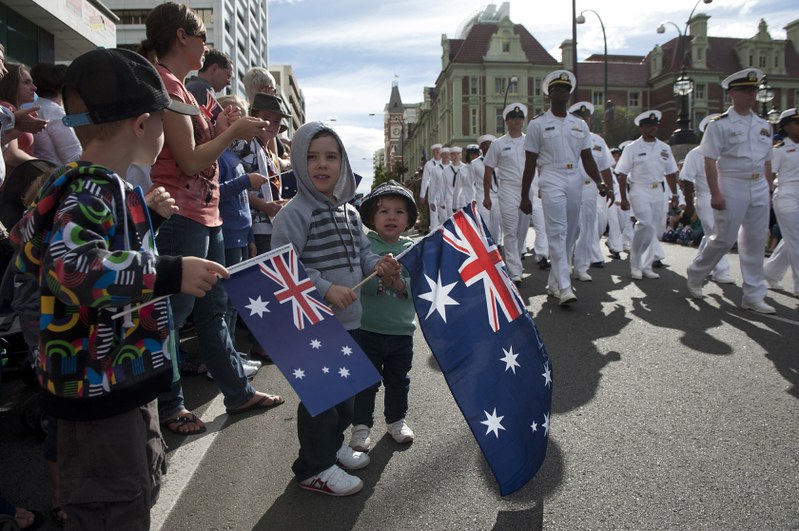The indigenously built Light Combat Aircraft Tejas LCA Navy NP1 today made its maiden flight in Bangalore when Commodore JA Maolankar, Test Pilot and Wg Cdr Prabhu, Flight Test Engineer completed a 22 minutes flight. During the flight the aircraft was put through various manoeuvers including low speed handling and even undertook a close formation flying at slow speed with another aircraft.
Earlier the LCA Navy NP1 had completed various intensive Ground testing regimen including Low Speed Taxi Trials (LSD), High Speed Taxi Trials (HSD), Ground Vibration Test (GVT), Structural Coupling Test (SCT) and extensive system integration tests with power plant using State-of-the-Art facilities at Bangalore HAL airport.
With this India has crossed a major milestone in Design, Development, Manufacturing and Testing of a “four plus” generation Carrier Borne Fly-by-Wire STOBAR aircraft.
LCA Navy aircraft is the first attempt in the country to provide a complete marine force multiplier that will give unique battle punch to the Naval Aviation Arm of the 21st Century to fulfil national dream of a blue water Navy. LCA Navy is the second STOBAR (Ski Take Off But Arrested Recovery) Carrier Borne aircraft in the world, after the Russian deck based aircraft. However, this will be the only Carrier borne Fighter aircraft in the Light category.
Along with Hindustan Aeronautics Ltd (HAL) who are the Principal Partners with Aeronautical Development Agency (ADA) in association with more than 100 agencies ranging from users, DRDO, CEMILAC, DGAQA, CSIR, PSUs, Private Industrial Sector and academia, spread all over India including Indian Navy and Indian Air Force are involved in the Programme. The key responsibility of LCA Navy design, build, integration and testing is with various Divisions of HAL. ADE has played a lead role in Design and Development of the Integrated Flight Control System in unison with NAL, Bangalore for Testing and Integration of Flight Control Laws to ensure safe functionalities for various phases of flight. AMAGB has been designed and manufactured by CVRDE, Chennai up-to the certification level. NSTL, Visakhapatnam and RCI, Hyderabad has rendered critical support for shock testing of LRUs. Significant Private Industry partnership with ASL (DRDO), Hyderabad for high energy Carbon-Carbon brake pads, and CADES for LEVCON and stub wing design, as examples, has helped maturing of Private Sector of the country. This Project will give us self reliance capability in a true sense and also help in taking up more Naval Aircraft Projects in future. Productionisation of indigenously developed Hydraulic system and Fuel system Line Replacement Units (LRUs) have been assigned to GTTC, Bangalore (Government Tool Room and Training Centre) and CTTC (Centre Tool Room and Training Centre), Bhubaneswar respectively. Above all this, constant support, regular participation, keen observation and continuous guidance from CEMILAC and DGAQA have ensured stringent certification and quality requirements are met on the aircraft.
The Design of first indigenous Naval aircraft imposed huge technological challenges to the Defence Research & Development Organisation (DRDO) to meet the peculiar requirements of Naval aircraft; starting from saline and humid environment of operation, restricted availability of deck run for launch and recovery and high operating load conditions. Basic design changes required to suit the carrier operations are strengthening of aircraft structure and Landing Gear, Arrester Hook, improved engine, enhanced aerodynamic performance and incorporation of special metal/material. A host of other systems like the Leading Edge Vortex Control (LEVCON) surface fitted at the front end of the aircraft wing operated by a concealed rotary actuator with aerodynamic profiling to ensure low landing speed, good controllability and better vision for the pilot. The feature of launch and recovery onboard Carrier at high sink rate of 7.1 rn/sec, flareless landing with engine to full throttle till arrested by deck cable impose five times of loading on Main Landing Gear as compared to the IAF version. Also such axial load calls for re-certification of all Line Replacement Units (LRUs), components and associated systems of naval version to ensure fail safe operation repeatedly.
ADA has set a world class Telemetry and Monitoring facility at the National Flight Test Centre (NFTC) to enable conduct of flight test activities at Bangalore. Intuitive on-line monitoring and control of the aircraft are carried out by the Test Director and various System designers. To facilitate proving the aircraft for carrier borne applications, a Shore Based Test Facility (SBTF) is being set up at the Naval Air Station, Goa replicating an aircraft carrier with a ski-jump for launch and arresting gear for deck recovery. Take off area is ready, with landing readiness scheduled for end of 2012. This test facility readiness is as per schedule.
The Chief of Naval Staff Admiral Nirmal Verma in a communication to the Scientific Adviser to the Raksha Mantri, said, “… I express my appreciation and congratulations to all members of the ADA, HAL and DRDO teams for the first successful limited test flight of the LCA (Navy) aircraft… We must ensure that today’s accomplishment leads to the timely fructification of the operational requirements for carrier borne operations….”












.jpg)








